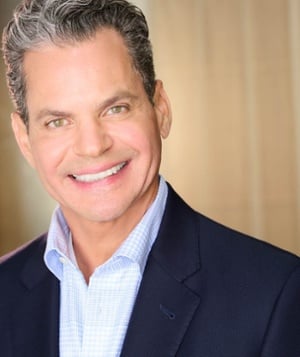Why It’s Time to Rethink Mortgage Terms and Embrace Flexible Payment Options
Owning a home has long symbolized the American Dream, yet for many hardworking families today, that dream feels increasingly out of reach. Since the 1970s, the gap between wages and home prices has widened dramatically, making homeownership difficult for the average American. It’s time to rethink our approach to mortgages and extending the standard 30-year fixed-rate mortgage to 40-year and even 50-year terms could be the key to unlocking homeownership for millions.
The Affordability Crisis: California as a Case Study
To understand the depth of the affordability crisis, let’s look at California, the largest housing market in the U.S. As of May 2024, the median price of a single-family home in California was $904,210, according to the California Association of Realtors. Meanwhile, the median household income in California, as reported by the 2022 American Community Survey, was just $91,551.
The disparity is striking: to afford a mid-tier home in California, a household would need an income of approximately $239,000—more than 2.5 times the median income. For many middle-class families, homeownership is not just challenging; it’s nearly impossible.
For example, a family earning the median household income of $91,551 would struggle to qualify for a mortgage on a $904,210 home. With a 30-year mortgage at a 6% interest rate, the monthly payment would be around $5,414, consuming more than half of their monthly income. However, extending the mortgage term to 40 years could reduce this payment to approximately $4,849, while a 50-year term could bring it down to $4,564—significantly lowering the financial barrier to homeownership.
Why Have Home Prices Skyrocketed?
The surge in home prices across the U.S. has been driven by several key factors:
- Low Mortgage Interest Rates: Historically low rates over the last decade made borrowing more affordable, increasing demand and driving up prices.
- Limited Housing Supply: A persistent shortage of homes for sale, especially in desirable areas, has created intense competition.
- Increased Demand: Millennials reaching prime home-buying age and a pandemic-driven demand for more space have further fueled the market.
- Rising Construction Costs: Supply chain disruptions, labor shortages, and increased material costs have made building new homes more expensive.
- Investor Activity: Institutional investors have increasingly bought single-family homes to convert them into rentals, reducing supply for individual buyers.
- Urban Exodus: The COVID-19 pandemic prompted many to move from expensive urban centers to more affordable suburban or rural areas.
- Government Policies: Pandemic-era mortgage forbearance kept many homes off the market, reducing inventory.
These factors have created a highly competitive market, resulting in significant price increases across much of the U.S.
Why 40-Year and 50-Year Mortgage Terms?
The traditional 30-year mortgage has long been the standard, but in today’s market, it’s not enough to bridge the affordability gap. Extending the term to 40 or 50 years could be a game changer. Here’s why:
- Lower Monthly Payments: Extending the mortgage term reduces monthly payments, making them more manageable for buyers struggling to qualify. For example, a 50-year mortgage reduces monthly payments by around $850 compared to a 30-year loan on a $900,000 home.
- Improved Qualifications: Lower monthly payments mean more borrowers can qualify for a mortgage, creating a more inclusive housing market.
- Increased Buying Power: With lower payments, buyers can afford more home, helping those in high-cost areas purchase properties they would otherwise be priced out of.
- Flexible Payment Options (Pick-a-Pay): A longer term allows for the incorporation of "Pick-a-Pay" options, where borrowers can adjust payments based on their financial situation. For instance, a 40-year loan might include options to pay on a 30- or 15-year schedule, offering flexibility while allowing borrowers to pay down their loan faster and reduce interest.
- Stimulating the Housing Market: Lowering monthly payments could bring a surge of buyers into the market, which would stimulate related industries like construction, home improvement, and retail.
Addressing the Tradeoffs
Extending mortgage terms isn’t without its drawbacks. The most obvious is the higher total interest paid over the life of the loan, and equity builds more slowly with a longer term. However, these tradeoffs can be mitigated by incorporating flexible payment options. Borrowers can pay more when they can afford it, thus reducing overall interest and building equity faster.
With safeguards like maintaining current loan-to-value requirements, lenders can protect against the risk of over-leveraging while still offering these extended terms. Moreover, the benefits of increased affordability, broader access to homeownership, and potential economic stimulus far outweigh these concerns.
A Call for Modernization
The disparity between income and home prices is a serious issue that lower interest rates alone won’t solve. We need a bold, modern approach to housing finance. Extending mortgage terms to 40 or 50 years, coupled with flexible payment options, could be the key to making homeownership affordable again for the middle class.
To support this shift, the government could offer tax credits or insurance protections, ensuring that this change benefits both borrowers and lenders. Additionally, other countries, such as Japan and the UK, have successfully implemented longer mortgage terms, providing examples of how the U.S. could adopt similar solutions to balance affordability and lender risk.
Conclusion
If we don’t act, the dream of homeownership could become a reality only for the wealthy, leaving the middle class behind. Extending the standard mortgage term to 40 or 50 years, along with flexible payment options, would address the affordability crisis, stimulate the housing market, and keep homeownership attainable for future generations. It’s a change that’s long overdue, and it’s time we made it happen.
 About the Author
About the Author
As a veteran of the mortgage industry with over 40 years of experience, I have witnessed the evolution of the housing market firsthand. I have seen its periods of growth and prosperity as well as its challenging downturns. Through these cycles, one constant has remained: the American Dream of homeownership. However, as I closely analyze the current state of our housing market, I am increasingly concerned about the growing disparity between middle-class incomes and the ever-rising cost of housing. This gap is not just widening—it is becoming an insurmountable barrier for many hardworking families.
The reason I wrote this article is simple: to sound the alarm on a critical issue that threatens the very foundation of the American Dream. I believe it is my responsibility, as someone who has devoted decades to this industry, to initiate a conversation about necessary changes. While lowering interest rates has traditionally been the go-to solution, I firmly believe that this alone is no longer sufficient. The underlying issue is the exorbitant cost of housing.
At this stage in my career, I am more committed than ever to contributing to equality, inclusion, and fair lending practices. I believe that by modernizing our approach to mortgage terms, we can create a more inclusive housing market that offers opportunities for all. My hope is that this article will not only spark discussion but also lead to actionable changes that benefit both borrowers and lenders alike.
References and Data Sources
- California Association of Realtors: Median Price of Single-Family Homes in California, May 2024
- U.S. Census Bureau - American Community Survey: California Median Household Income, 2022
- Urban Institute: The State of the Nation's Housing Affordability Crisis
- Federal Reserve: Mortgage Debt Outstanding and Historical Data
- OECD: Housing Affordability and Mortgage Trends in International Markets
Call HomeLife Mortgage now and let us help you get pre-approved now!
Our Commitment to Excellence
At HomeLife Mortgage, our dedication to excellence is evident in the success stories of our clients. We pride ourselves on delivering top-tier service and financing solutions that meet our clients' needs. But don’t just take our word for it—hear it from those who matter most: our clients. Our Trustpilot reviews reflect our unwavering commitment to helping you achieve your homeownership and investment goals.
If you’re hungry for more insights, be sure to check out our other blog posts and subscribe to our YouTube channel for even more tips and tricks.
The Ultimate Guide for DSCR Rental Loans eBook
Download our free eBook to learn the ins and outs of DSCR Rental loans and everything you need to know to apply and qualify for your loan.
More Content For You:
Investment Property Mortgage Rates and Loan Requirements 2023
Why No-income Doc Rental Loans are Fast and Easy
How to qualify for a No-doc Rental Property Loan
Questions?
Click the live chat window on our site or call (888) 677-2526. Our team is ready to assist you!
About HomeLife Mortgage
For more than 25 years, HomeLife Mortgage has built a strong reputation in California and Florida as a leading mortgage broker, servicing the needs of borrowers who have been unable to obtain conventional financing. HomeLife Mortgage is at the forefront of non-bank lending offering the next generation of mortgages including Jumbo Loans, Real Estate Investor Loans, and Bank Statement Loans.



_Page_01-1.jpg?width=229&height=296&name=Non%20Doc%20Rental%20Properties%20(Final)_Page_01-1.jpg)



